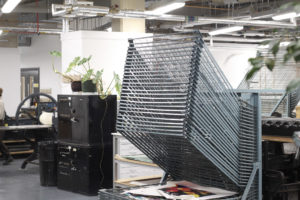Senior Lecturer - Graphics & Illustration
Faculty of Arts, Science and Technology
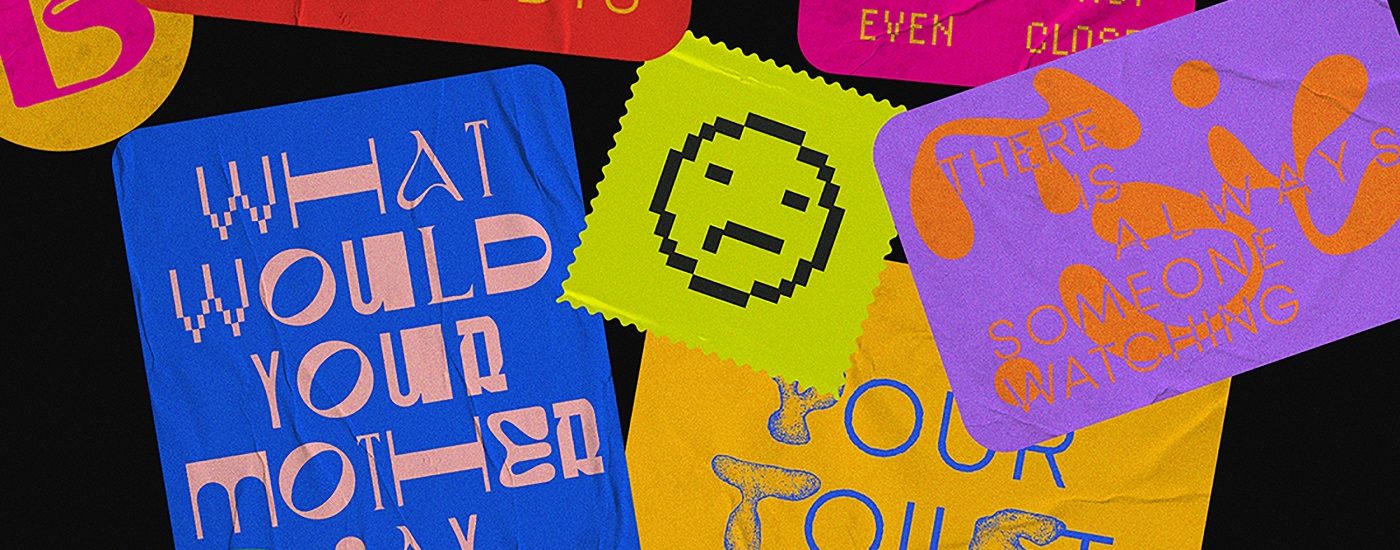
Graphic Design BA (Hons)
- Home
- Courses by subject
- Graphic Design BA (Hons)
Key Facts
-
UCAS Code
BA: W210
BA with Foundation: W211 -
Level
UndergraduateUG BA (Hons)
-
Duration
Full Time: 3 years
Full Time Foundation: 4 years -
Starting
September
-
BCC at A-Level or,
DMM at BTEC -
Full Time: £9,535
Integrated Foundation Year: £9,535 -
Full Time: £15,700
Integrated Foundation Year: £15,700 -
Waterside
Updated 02/04/2025
Updated 02/04/2025
Get in touch
For questions regarding study and admissions please contact us:
UK STUDENTS ENQUIRIES
study@northampton.ac.uk
0300 303 2772
INTERNATIONAL STUDENTS ENQUIRIES
This course is subject to validation for September 2025.
The University of Northampton’s Graphic Design BA explores the communication of ideas and messages to diverse and evolving audiences through a dynamic range of media that highlights the potential of what design can achieve.
Studio culture is at the heart of the Graphic Design degree, naturally fostering the creativity, collaboration and debate that inspire personal perspectives on design. Students experiment with a range of traditional processes and emerging technologies to challenge established conventions of image-making and meaning.
Through engaging with real-world problems, social issues and commercial scenarios students develop critical, reflective and professional skills that will prepare them for the ever-changing creative industries.
The course covers everything from digital media software to traditional craft skills, such as print making, 3D and photography, ensuring you are well-prepared to enter the creative industries as a versatile and competent designer.
Highlights
- On the Graphic Design BA, you will have access to specialist resources, regular guest lecturers and industry contacts
- There will be valuable opportunities to work with live commercial briefs, as well as taking part in international competitions, and social impact initiatives.
- Several of our Graphic Design students have either been shortlisted or have gone on to win international design competitions, such as Penguin Cover Design Award, and D&AD New Blood awards.
- You will have a dedicated Graphic Design studio for course members with access to MacBooks, creative software, cameras and lighting kits, sound and print facilities.
- There is high-quality teaching from experienced practising designers and educators.
- You participate in social design projects., and work-based learning through live commercial projects with a real focus on your future career, with employability modules in all years of the course.
- Work based learning through live commercial projects with a real focus on your future career, with employability modules in all years of the course.
- You can access an exciting programme of study trips and cultural visits.
- There are technical support and specialist workshop demonstrations.
- As course members you will receive regular feedback and insights from industry professionals.
- There is a guaranteed paid internship with the Northampton Employment Promise.
- HP Laptop and software included with this course, see Eligibility criteria and Terms and Conditions.
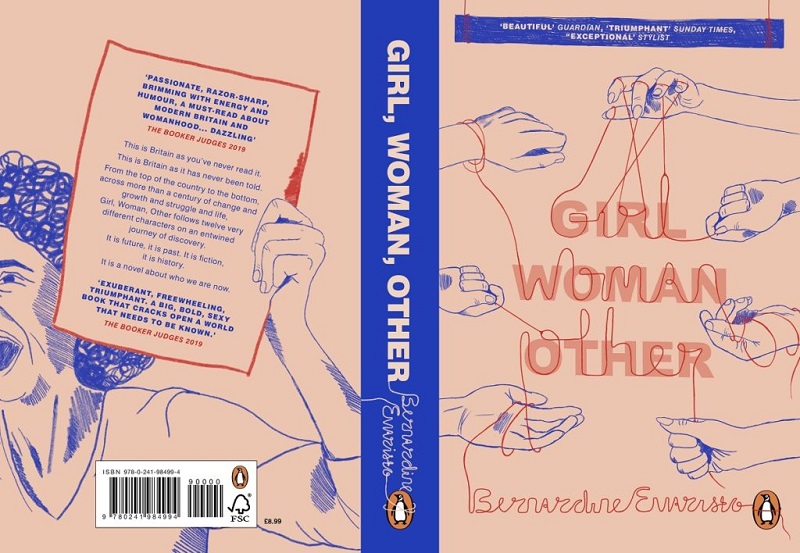
Photo shows 'Girl, Woman, Other' book cover designed by Evy Diepenbroek, which was shortlisted for Penguin Cover Design Award in 2022. The cover is fawn and blue in colour and depicts 7 illustrated hands interconnected by string to symbolise their entwined lives and narratives. The back has a female holding a piece pf paper and shouting - the paper contains the books back copy text and quotes.
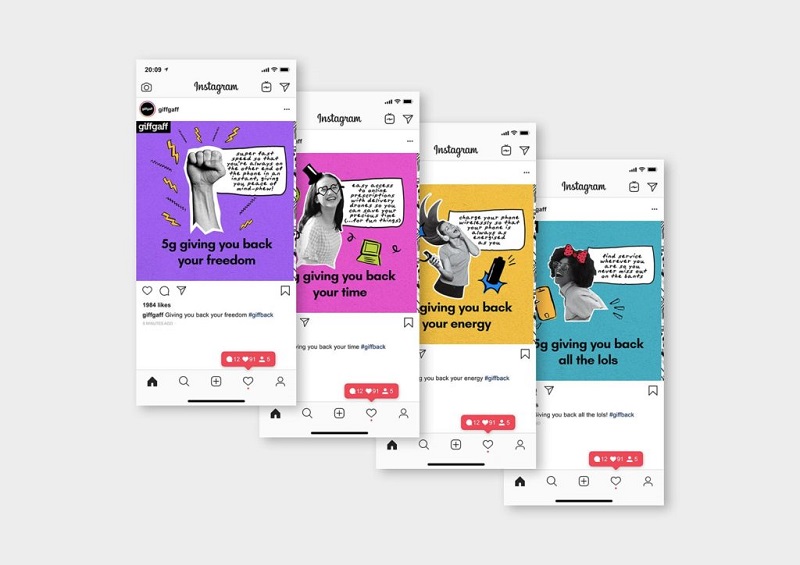
Images shows a series of four Instagram posts on smartphone screens
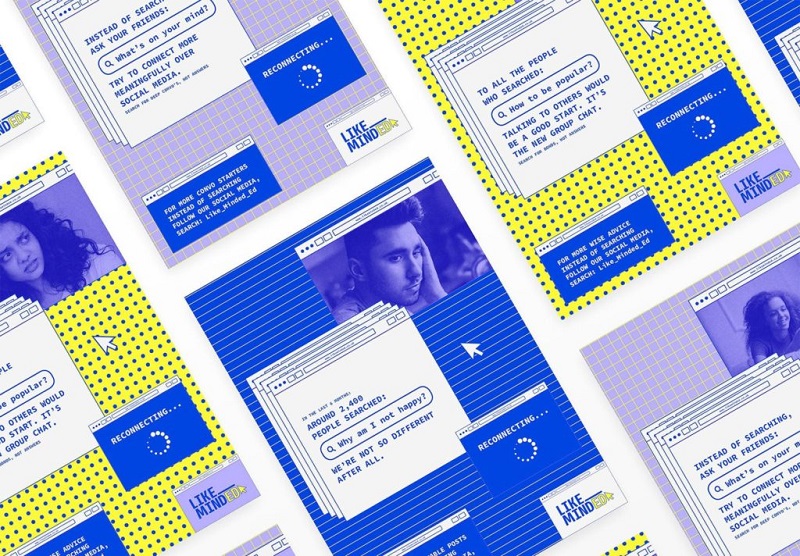
Image shows a blue and yellow graphic design for a marketing campaign for a wellbeing service including images and text
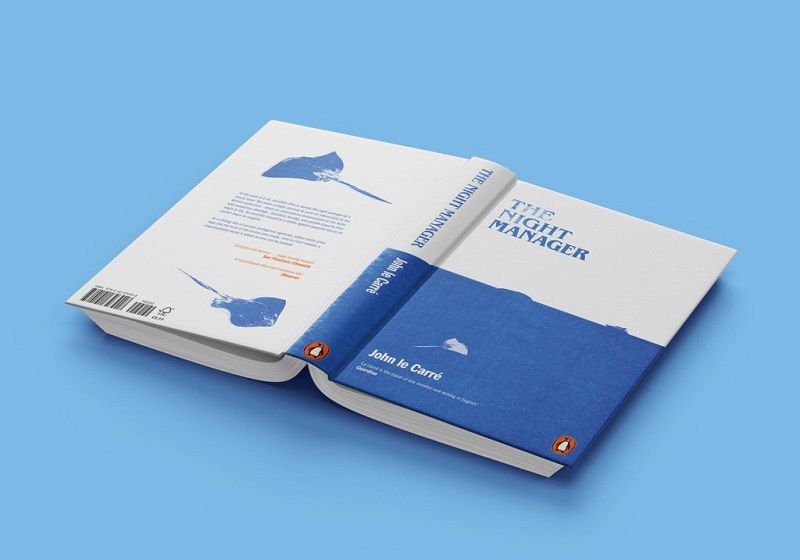
Image shows a hardback copy of The Night Manager placed face down to show the blue and white cover in full.
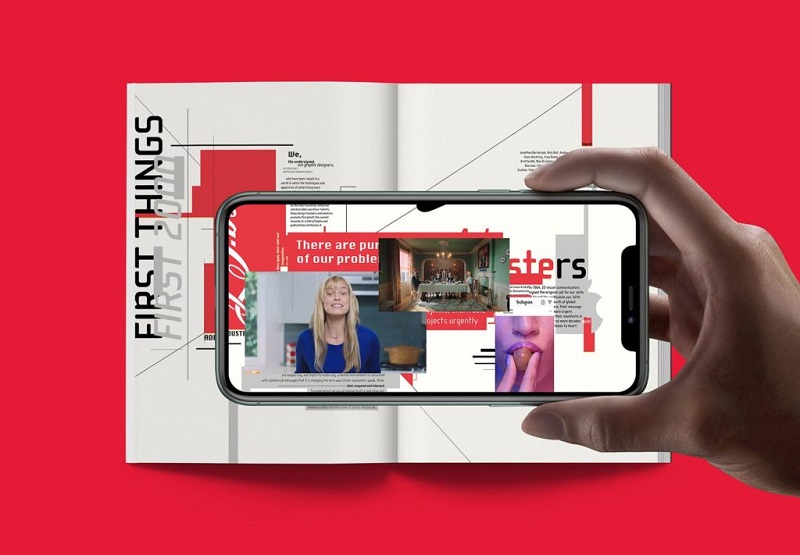
Image shows a hand holding a smartphone over a magazine spread of photos and text
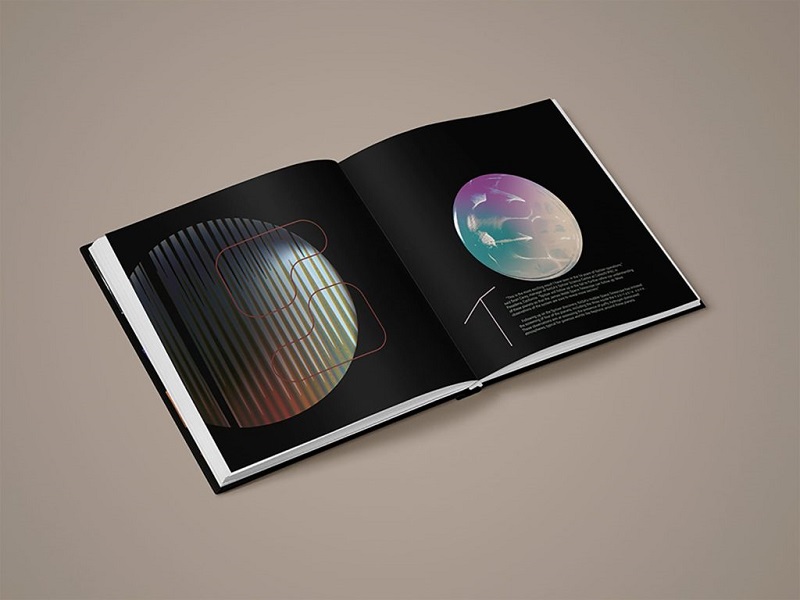
Image shows a two page spread in an open book of two metallic circles and white text on a black background
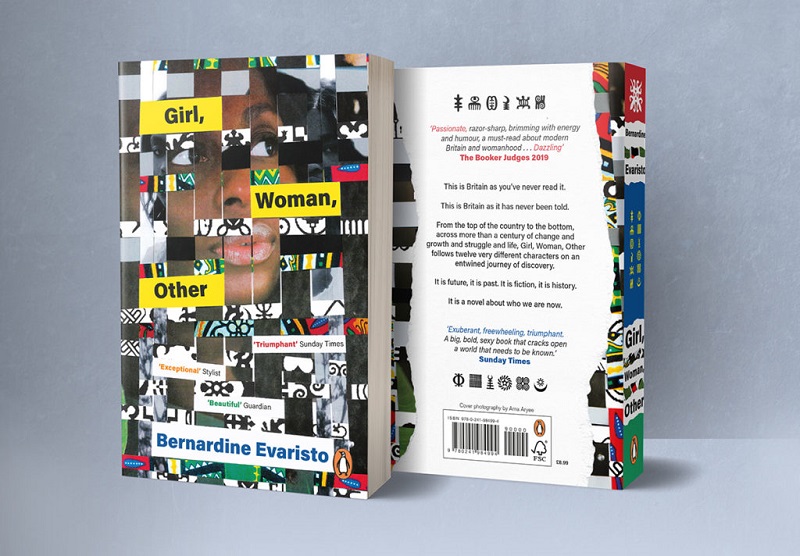
Photo shows a book cover for 'Girl, Woman, Other' designed by Karla Ayree, which was the Penguin Cover Design winner in 2022. The cover is an image of a black female interwoven into various multi coloured African culture patterns and textures with adinkra symbols embedded throughout the book's design to symbolise each character’s story. Pairing the adinkra symbols with a vibrant dashiki pattern creates an impactful, vivid, and contrasting design.
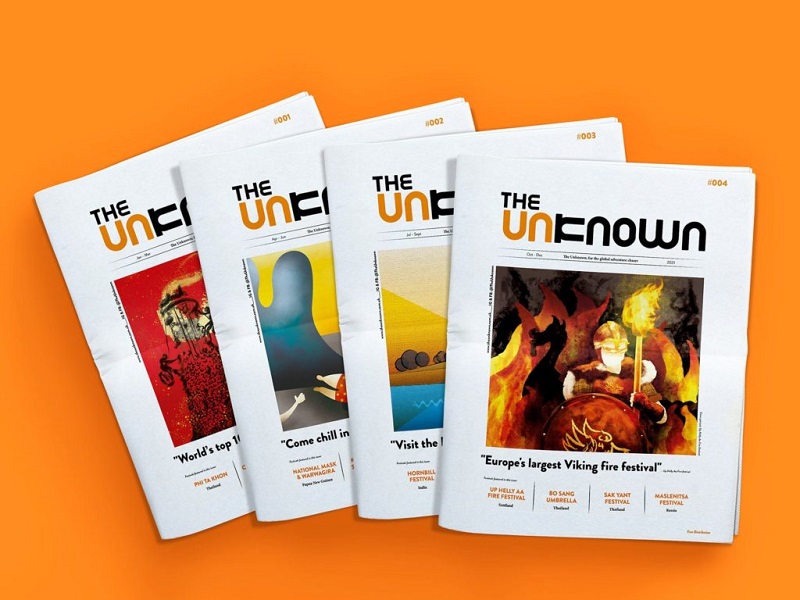
Image shows four magazine covers on an orange background. The magazine is named The Unknown and features one large image with text

Photo shows 'Girl, Woman, Other' book cover designed by Evy Diepenbroek, which was shortlisted for Penguin Cover Design Award in 2022. The cover is fawn and blue in colour and depicts 7 illustrated hands interconnected by string to symbolise their entwined lives and narratives. The back has a female holding a piece pf paper and shouting - the paper contains the books back copy text and quotes.

Images shows a series of four Instagram posts on smartphone screens

Image shows a blue and yellow graphic design for a marketing campaign for a wellbeing service including images and text

Image shows a hardback copy of The Night Manager placed face down to show the blue and white cover in full.
Entry Requirements
For A-Level students, we typically offer places to those who achieve BCC. For those studying BTEC or Cambridge Technicals, a DMM is generally required. T-Level students should have achieved a Pass with grades C and above.
We welcome applications from those with a mix of A-Level and BTEC/Cambridge Technical qualifications, as well as those holding a Foundation Diploma in Art and Design.
-
Applicants will need to attend an interview and provide a portfolio showcasing their work in Art and Design. International students can submit their portfolio electronically. Those with a relevant HND or Foundation Degree may be eligible to enter directly into the second or third year of the programme.
For more more information on how to make an application, please visit our How to Apply page.
If you are an International student and would like information on making an application, please see our How to Apply page.
-
Entry into the Graphic Design foundation programme typically requires DEE at A-Level, MPP at BTEC, or a Pass at T Level with grades D or E. We also consider applicants with professional experience, alternative qualifications, or self-taught expertise related to the programme.
-
Once your application has been reviewed, we may invite you to a chat, which can be conducted either on campus or online. You will need to present about 10 pieces of your work, demonstrating a breadth of creativity across various formats and media, such as logo design, branding, digital work, and more. We also appreciate seeing your sketchbooks, whether physical or digital images, to understand your process.
The chat, conducted by a programme team member, will last about 30 minutes. It’s not only about evaluating your work but also understanding your passion for the course and discussing any questions you might have. If you’re visiting us on campus, you’ll also get a tour of our studios.
-
All international and EU students must meet our English language requirements to ensure success in their studies. The minimum standard is an IELTS score of 6.0 (or equivalent), with no less than 5.5 in each band.
For information regarding English language requirements at the University, please see our IELTS page.
Student Successes
Congratulations to our final year students for their outstanding achievements at the 2023 D&AD New Blood Awards and the New Designers Awards!
This year, Carrie Slinn, Cara King, and Ellie Lines clinched the coveted Yellow Pencil at the D&AD New Blood awards for their innovative 'Stackd' app, designed to mimic the dynamics of the stock market, fulfilling the eBay brief to the highest standard.
Additionally, Tab Dudley stood out at the New Designers exhibition, securing the top prize with their 220-page graphic art self-help book. This significant accomplishment highlights their remarkable creativity and dedication.
We're immensely proud of our students for securing these prestigious accolades, showcasing their skills and making a significant impact in the design community.
Course Content
-
Explore your creative capabilities with the University of Northampton’s Graphic Design programme. Here, every visual concept you develop has a clear purpose, whether it’s to market, entertain, solve business problems, raise awareness of important issues, or influence public perception.
Our BA Graphic Design blends carefully developed design solutions with the latest technologies to create messages that are clear, impactful, and engaging. We focus on the role of effective design in communicating ideas powerfully and memorably.
The course covers four main areas:
Commercial Enhance your technical skills and apply design principles to real-world commercial projects. You’ll gain insights into audience behaviour and learn how to produce compelling and persuasive designs.
Experimental Explore the limits of traditional design. We encourage you to adopt new perspectives and use your creativity to tackle complex messages and themes innovatively.
Social Impact Channel your design skills towards making a positive difference. This stream emphasises social, ethical, and environmental challenges, motivating you to design with compassion and purpose.
Professional and Critical Gain an in-depth understanding of the creative industries and what it takes to succeed in them. You’ll explore the business aspects of design, boost your research capabilities, and refine your analytical thinking regarding visual culture.
After graduation, our students enter a variety of creative roles, including positions in top agencies, freelance work, and starting their own businesses in areas such as branding, advertising, illustration, film, and interactive design. Others choose to enhance their skills through postgraduate study.
Penguin Cover Design and the D&AD The New Blood Awards
Explore the exciting world of the creative industries with two respected competitions: the Penguin Cover Design and D&AD New Blood Awards. These platforms offer a fantastic opportunity for you to present your work to leading figures in the design world. Students from the University of Northampton’s Graphic Communication Design BA (Hons) programme have a history of performing well, reflecting our commitment to excellence in design education.
Student Success Stories
Our students regularly achieve recognition at the Penguin Cover Design Award, consistently reaching the shortlist.
This year was no exception, with Evy Diepenbroek and Karla Ayree both nominated in the Adult Fiction category. Karla was delighted to win the national prize with her cover for Bernardine Evaristo’s ‘Girl, Woman, Other’, demonstrating the high standards our students strive to meet.
Evy Diepenbroek was also honoured with a nomination for her thoughtful design for the same book.
In addition, our participation in the D&AD New Blood competition has been fruitful, with our 2022 graduate Laura Tucker winning a coveted pencil for her environmentally focused animation for Giff Gaff Recycling. These achievements are a testament to the supportive and inspiring environment that Northampton offers to budding designers.

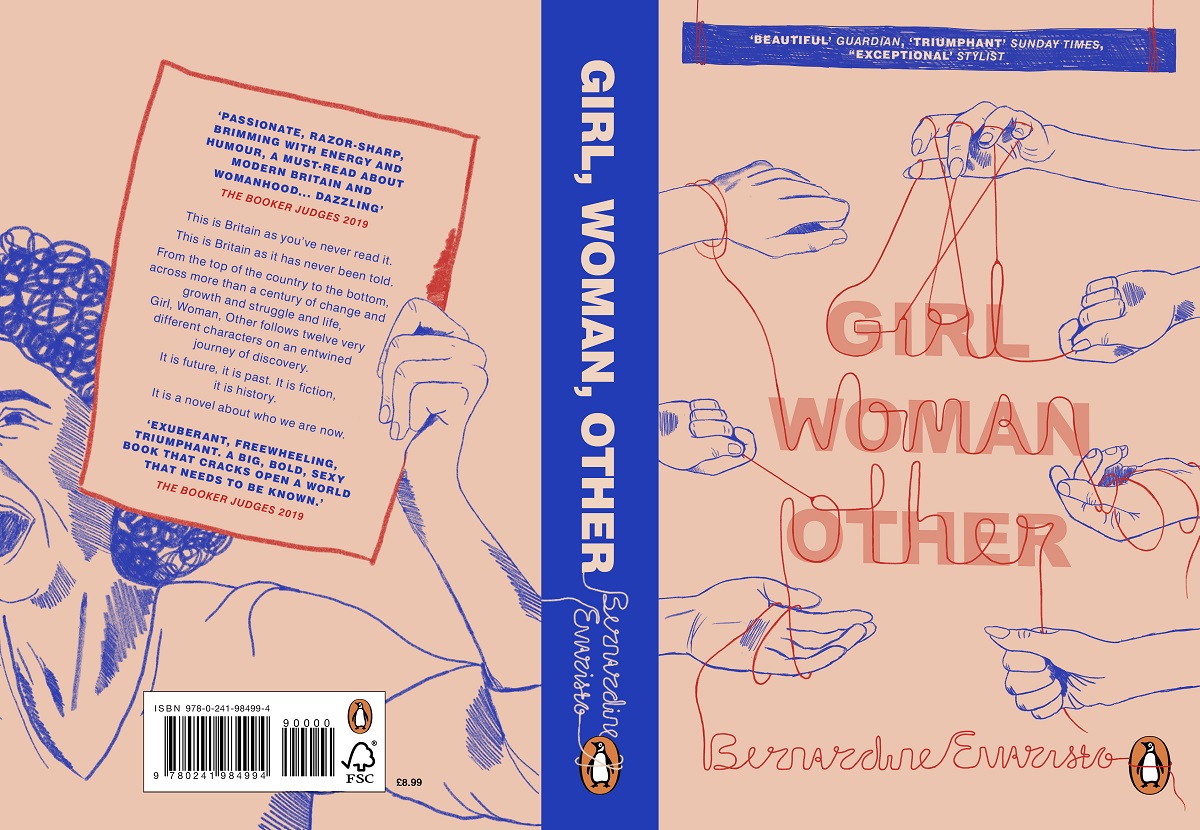
Employability Gold Award
Complete key modules across your first, second, and third years in the Graphic Design program, and you’ll earn the Northampton Employability Gold Award.
This award showcases your developed employability skills, a significant milestone in your professional journey. Plus, it qualifies you for the Northampton Promise: if you find yourself unemployed twelve months after graduation, the University guarantees you a paid internship lasting between three and six months. This is our commitment to your future success.
Course Schedule
Your academic schedule will blend 15 hours per week of lectures, seminars, workshops, and technical demonstrations tailored to your study level. To complement your classes, we suggest dedicating about 10 hours weekly to independent study. Beyond structured class times, you’ll also have full access to our state-of-the-art technical facilities for further learning and exploration. This balanced approach ensures you have both the guidance and the freedom to excel in your studies.
Please note the modules shown here relate to the academic year 24/25. The modules relating to the academic year 25/26 will be available from June 2025.
-
-
Principles and Processes (40 Credits)
Module code: 2DD1038Status: CompulsoryThis module introduces the fundamentals of Graphic Communication Design principles and process in a playful and open environment where risk taking is actively encouraged. Students explore traditional and experimental skills for digital and analogue processes. Lateral thinking, ideation and creative responses are at the heart of the module.
-
Contemporary Conversations - Challenging Issues (20 Credits)
Module code: 2DD1039Status: CompulsoryThe module introduces the students to challenging issues within contemporary Graphic Communication Design conversations. The conversations encourage students to explore the practitioner's responsibilities, sensory experiences, social tensions and critical ideas that underpin creative practice.
-
Design in Action (40 Credits)
Module code: 2DD1040Status: CompulsoryThe purpose of this module is to put the principles of Graphic Communication Design into action, using creative and technical skills in real-world applications. Project briefs focus on understanding varied themes and the role of audiences and other stakeholders in the creation of targeted design solutions.
-
Exploring the Creative Industries (20 Credits)
Module code: 2DD1041Status: CompulsoryThe purpose of this module is to explore and understand how the creative industries work and are continuously adapting to contemporary cultures. Students will define the essential characteristics of a professional graphic communicator and be introduced to the variety of roles within the creative sectors.
-
Principles and Processes (40 Credits)
-
-
Industry in Action (40 Credits)
Module code: 2DD2028Status: CompulsoryThis module develops students' ability to creatively respond to Graphic Communication Design challenges through real-world problem solving exercises. Students apply professional practice skills to live projects and competition briefs, navigating the needs of different audiences and the complex demands of commercial design practice.
-
Developing Dialogues - Matters of Concern (20 Credits)
Module code: 2DD2029Status: CompulsoryThrough this module students encounter different perspectives about the changing processes and politics of cultural and creative institutions. The module enables students to navigate multiple conceptual positions in order to identify their creative and personal matters of concern within their practice and wider dialogues.
-
Changemaker - Design and the Community (40 Credits)
Module code: 2DD2030Status: CompulsoryThis module focuses on Graphic Communication Design's role as a force for positive change through projects that explore social, ethical and environmental concerns. Students are encouraged to develop empathic and mindful approaches to communication using their creative skills for progress and transformation in local and global contexts.
-
Emerging Spaces and Practices (20 Credits)
Module code: 2DD2031Status: CompulsoryThis module explores the boundaries of the ever-changing and contemporary creative industries, including design as a speculative practice. Students experiment and take creative risks through new and emerging ways of working, challenging conventions to define new personal visual languages and environments in which innovative communication design can be experienced.
-
Industry in Action (40 Credits)
-
-
Preparing for industry (20 Credits)
Module code: 2DD3012Status: CompulsoryThe purpose of this module is for students to confidently define their post-graduation trajectory. Students will develop and apply interpersonal skills and industry knowledge to a range of work models from the evolving creative industries. This module concludes with a detailed presentation outlining the students' professional intentions.
-
Professional Portfolio (40 Credits)
Module code: 2DD3013Status: CompulsoryThis module enables students to establish a professional graduate portfolio through a series of industry-related briefs covering a range of contemporary design practices. Impactful ideas targeted at defined audiences are central to this module, with students encouraged to take risks and explore new and emerging ways of working and communicating.
-
Major Project (60 Credits)
Module code: 2DD4007Status: CompulsoryThe purpose of this module is to develop a progressive and impactful body of practice and writing, based on thorough critical research into an area of personal interest within contemporary visual culture. Outcomes will form a significant part of the graduate's portfolio, showcasing specialisms within contemporary graphic communication design.
-
Preparing for industry (20 Credits)
Schedule
Your taught study will be a combination of lectures, seminars, workshops and technical demonstrations, usually for 15 hours per week, depending on your level of study. In addition, we recommend that you spend around 10 hours per week in self-directed study time. You will have access to technical facilities and studies outside of taught time.
-
-
At the University of Northampton, we’re dedicated to empowering you with all the resources you need to make an impact after graduation. By joining our full-time Graphic Design degree, you’ll start your studies with a high-spec laptop perfect for seminars, group projects, and home study—setting you up for success from day one.*
We’re committed to helping you realise your ambitions. Throughout your Graphic Design BA, we’ll support you in identifying and developing your skills, discovering your strengths, and gaining practical experience. This robust preparation ensures you stand out when applying for jobs or further studies. Thanks to our confidence in our educational approach, we offer the Northampton Employment Promise, guaranteeing that our focused and award-completing students graduate highly employable, ready to secure great jobs or pursue further education.To check out the full list of perks, visit our Student Perks page or dedicated International Perks page.
*UK fee payers only (see Terms and Conditions for further details).
-
The Integrated Foundation Year (IFY) at the University of Northampton provides a supportive route into degree study, particularly suited for students who may not meet the traditional entry requirements.
If your qualifications differ from the typical admissions criteria, our four-year programme including the Integrated Foundation Year is an excellent opportunity to develop the necessary skills for degree-level study. The foundation year is focused on equipping you with key theoretical, practical, and academic skills.
You will begin with a foundation year, studied full-time, which is designed to help you adjust to the university environment and prepare for the rest of your degree. The subsequent three years will then follow the standard degree format. This approach aims to give you a solid start and continuous support throughout your university journey.
-
How will I be taught on Graphic Design BA (Hons)?
On the Graphic Design programme, we employ a diverse mix of teaching methods to enrich your learning experience:
- Project briefs: Tackle a variety of briefs including those set by staff, derived from industry, or from competitions.
- Workshops and demonstrations: Participate in practical sessions to hone your technical skills.
- Tutorials and seminars: Engage in both group and individual learning sessions.
- Group critiques and presentations: Share and refine your work through peer and tutor feedback.
- E-activities and online learning: Utilise digital platforms for a blended learning experience.
- Guest speakers: Gain insights from visiting industry experts.
Your learning will be facilitated by our dedicated team of Senior Lecturers, Lecturers, and Associate Lecturers who are involved in all aspects of your educational journey, from setting projects to leading study visits.
How will I be assessed on the Graphic Design degree?
Assessment is varied and designed to reflect real-world practices in graphic design. It includes:
- Portfolio presentations: Showcase your design solutions, which can be in printed, digital, or physical formats.
- Oral presentations and pitches: Develop your communication skills by presenting your ideas to peers and tutors.
- Written work: Engage with written assignments that complement your design projects.
- Self-assessments: Reflect on your own progress and development.
What are some recommended books and resources?
To get a head start or to dive deeper into graphic design, consider exploring these resources:
Books:
- Graphic design: a user’s manual – Adrian Shaughnessy
- Know your onions: graphic design – Drew De Soto
- The A-Z of visual ideas: how to solve any creative brief – John Ingledew
- The art of looking sideways – Alan Fletcher
- Design History, A Students’ Handbook – Hazel Conway
- Graphic Design: A New History – Stephen Eskilson
- On Creativity – John Hegarty
Magazines:
- Creative Review
- Eye: the international review of graphic design
- Baseline: international typographics journal
- Computer Arts Magazine
- Juxtapose
- Aesthetica
- Adbusters
Web:
- Its Nice That (web)
- Design inspiration – Design Inspiration
- Computer Arts magazine / CreativeBloq
Worried about student finance?
Get all the info you need ahead of time, before you can apply for funding in Spring on our fees and funding pages.
Fees and Funding
2025/26 Tuition Fees
Fees quoted relate to study in the Academic Year 25/26 only and may be subject to inflationary increases in future years.
- UK – Full Time: £9,535
- UK – Integrated Foundation Year: £9,535
- International – Full Time: £15,700
- International – Integrated Foundation Year: £15,700
Fees quoted relate to study in the Academic Year 2025/26 only and may be subject to inflationary increases in future years. UON will adjust UK fees annually in line with Government Policy.
-
Materials, Events and Visits
- Essential workshop materials, competition entries, and course-related visits are covered at no extra cost.
- We recommend budgeting for additional printing, around £30 per year, and around £50 or more for specialist materials.
Trips
- Optional UK trips may cost around £50 annually. Overseas trips could be approximately £350 per visit.
Degree Show
- In your third year, contributions or fundraising might be needed for your Graphic Design Degree Degree Show catalogue and marketing materials, around £20, and to participate in Graduate Design Shows in London, around £25.
Technology
- You’ll get a free subscription to Adobe Creative Suite during your course.
- Our design studios are equipped with MacBooks and iMacs; purchasing your own Apple computer is recommended if possible.
Art supplies
- You’ll need to provide everyday art supplies like sketchbooks and pens. Our onsite Art Shop can cater to all these needs.
-
For information on the scholarships available to you, please see our scholarships page.
For more information about possible funding options, please visit our Fees and Funding pages.
-
Fees quoted relate to study in the Academic Year 2024/25 only and may be subject to inflationary increases in future years.
- UK – Full Time: £9,250
- UK – Integrated Foundation Year: £9,250
- International – Full Time: £15,200
- International – Integrated Foundation Year: £15,200
Staff
Careers and Employability
A Graphic Design BA degree can open up your career options. You will not be limited to one specific type of role, but rather be able to pursue numerous career paths. Our Graphic Design graduates use their design skills to work in:
- Branding
- Advertising
- Illustration
- Editorial and Publishing
- Digital moving image
- Typography
- Interactive design
- Online, social media and app design
- Packaging design
- Photography
- Information design
Throughout your time on the course, as well as post-study, we offer support to ensure you receive the guidance and information needed to succeed in your field of work.
Master’s Opportunities
The University of Northampton’s master’s courses are a great way to enhance the skills you have already learnt. Benefit from our 20% alumni discount on master’s fees to give yourself a CV that will catch the eye of employers.
Facilities and Special Features
When you study BA Graphic Design at the University of Northampton, you will enjoy access to a number of different facilities and services to help you in your studies, including;
- Large specialist studio spaces with dedicated access to Mac-books, digital cameras, lighting kits and sound recording equipment.
- Additional iMac design suite
- Subsidised digital printing
- Printmaking facilities and professional photography studios with controlled lighting studios
- Video editing suites
- Free Adobe Creative Cloud software account for your duration on the course
Related Courses
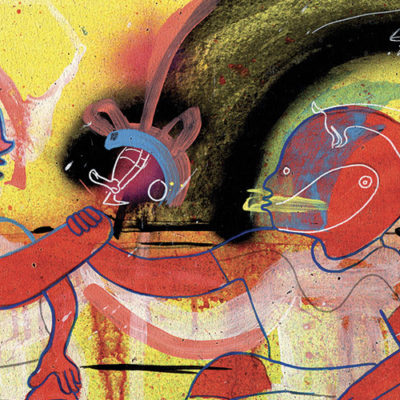
Illustration BA (Hons)
This course will help you to develop a range of illustration and design skills including drawing,...
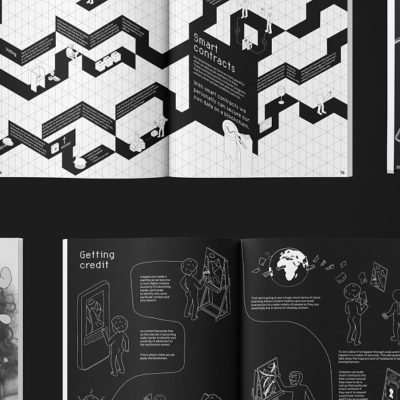
Graphic Communication Design (Top-Up) BA (Hons)
Graphic Communication Design (Top-Up) provides you with all the skills and knowledge you will need to...
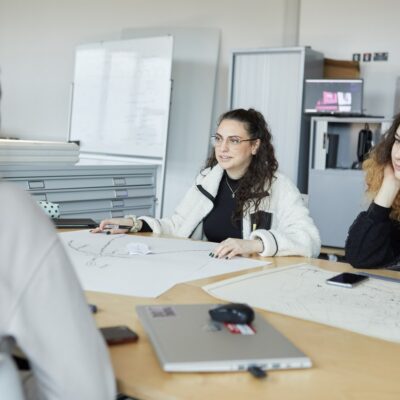
Product Design BA (Hons)
We challenge ideas of functionality, aesthetics, materials, sustainability, social contexts and ethics so you can design...
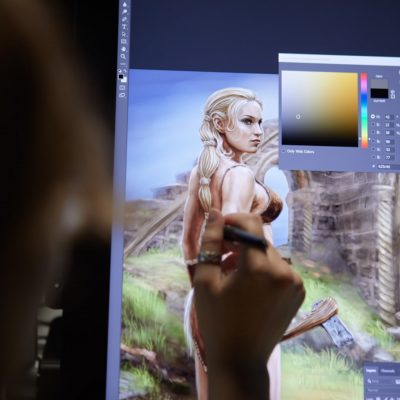
Games Art BA (Hons)
Our Games Art course is an introduction to the creative aspects of the gaming industry, giving...



